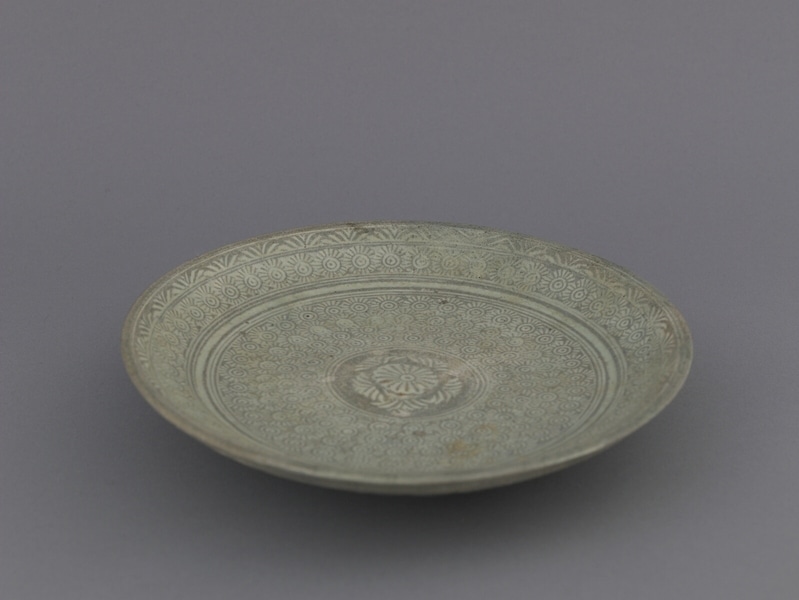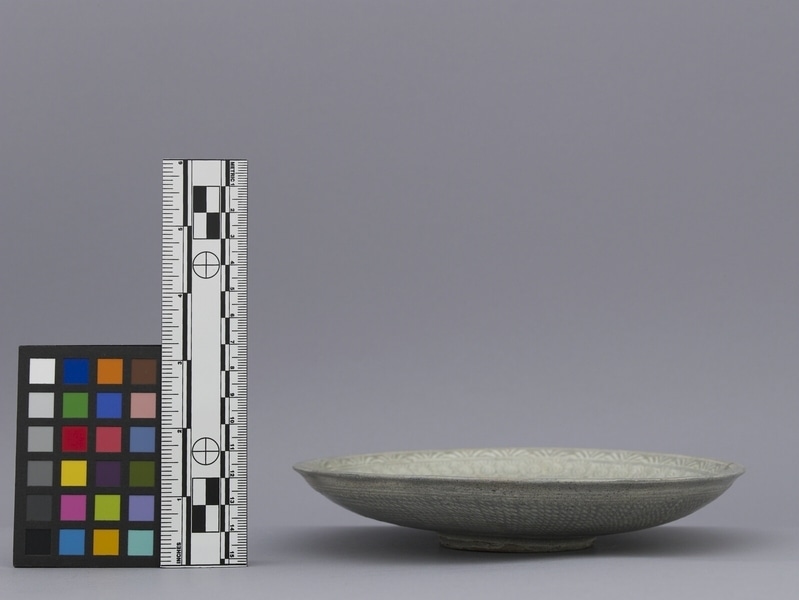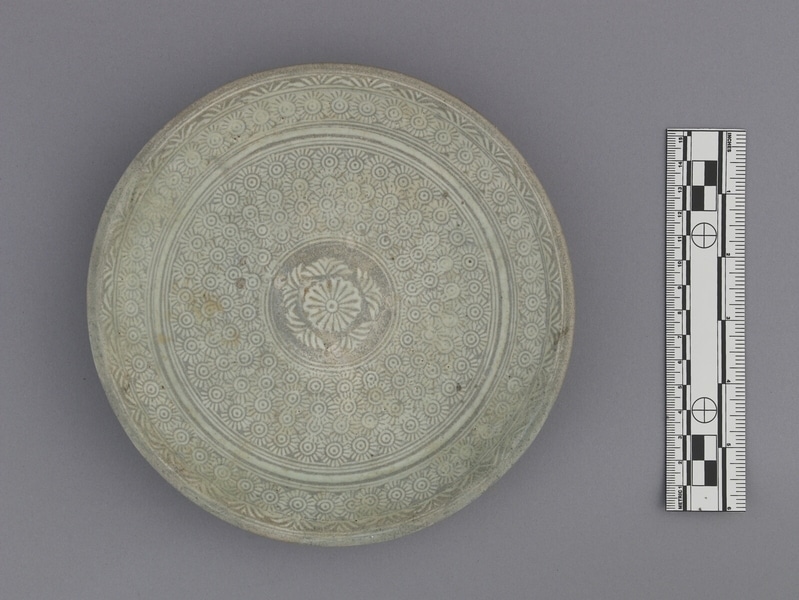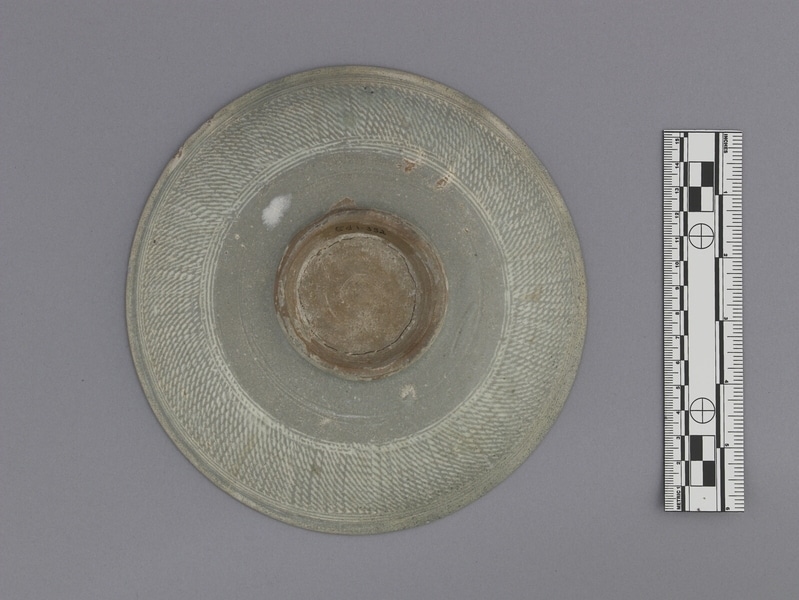Dish Item Number: Ed1.352 from the MOA: University of British Columbia




Description
Buncheong (분청; 粉靑) dish with stamp impressed designs with repeated stylized chrysanthemums patterns. Interior surface: geometric border around rim; chrysanthemum design in centre; abstract chrysanthemums pattern in background. Exterior surface: rows of dotted motifs inlaid on the surface, including the unglazed bottom and foot; border of lines at rim.
History Of Use
Buncheong (분청사기; 粉靑沙器), a traditional Korean stoneware, was produced in the fifteenth century during the Joseon dynasty (1392-1910). It derived from the inlaid celadon (sanggam cheongja; 상감청자; 象嵌靑磁) techniques of the preceding Goryeo dynasty (918-1392), but is less processed and refined. It is characterized by its coarse gray body with white slip and covered in a green-tinted, semi-translucent glaze. It features stamp-impressed designs with repeated stylized patterns and dotted motifs inlaid on the surface and unglazed bottoms and feet; this stamping technique for inlaying with white slip is called inhwa (인화; 印花) in Korean. It enabled makers to produce inhwa buncheong (인화분청; 印花粉靑) ware in large quantities with less effort than sanggam (상감; 象嵌; inlay technique). It was often produced under governmental control to maintain uniform quality and shape. It was widely produced for central and provincial governments, as well as commoners. This type of dish is often inlaid on the surface with the name of the government office where it was used or the name of the place of production. The need for buncheong ware as tribute goods gradually declined due to preference for white porcelain (baekja; 백자; 白磁), and around the mid sixteenth century buncheong production ended altogether.
Iconographic Meaning
Warabite pattern on front; tobiganna pattern on back.
Specific Techniques
Wheel-thrown, glazed, stamped, with slip-filled decoration. This dish is typical of buncheong ware, characterized by white-slip decoration with stamp-impressed designs. Buncheong uses similar techniques to Goryeo celadon. Inlaid Goryeo celadon (sanggam cheongja; 상감청자; 象嵌靑磁) has a carved design, which was then filled with white (or sometimes black) slip (a material made by mixing water and clay), which was scraped away when hardened, leaving the slip embedded in the sparse design areas. It was then glazed and fired to the typical blue-green shades of celadon. Buncheong ware has a coarse gray body and is decorated with white slip, then covered in a green-tinted, semi-translucent glaze. The method of applying white slip is classified into two broad categories: The first is technically the same as the sanggam described above, and is not always clearly distinguishable from later Goryeo inlaid celadon, but the pattern is typically denser. The second technique is when white slip is applied to the surface using a brush (guiyal; 귀얄) or dipping it in white slip (dumbeong; 덤벙), and then decorating it using a variety of techniques such as sgraffito (bakji; 박지), incising (johwa; 조화), underglazing iron-brown (cheolhwa; 철화), or sometimes leaving it undecorated.
Cultural Context
Traditional Korean stoneware.
Item History
- Made in Korea between 1400 and 1450
- Collected during 1978
- Owned by Richard Pearson before January 2, 1979
- Received from Richard Pearson (Seller) and Fyfe-Smith Memorial Oriental Collection Fund (Funding source) on January 2, 1979
What
Who
- Culture
- Korean
- Previous Owner
- Richard Pearson
- Received from
- Richard Pearson (Seller) and Fyfe-Smith Memorial Oriental Collection Fund (Funding source)
Where
- Holding Institution
- MOA: University of British Columbia
- Made in
- Korea
When
- Creation Date
- between 1400 and 1450
- Collection Date
- during 1978
- Ownership Date
- before January 2, 1979
- Acquisition Date
- on January 2, 1979
Other
- Item Classes
- ceramics
- Condition
- good
- Current Location
- Case 77
- Accession Number
- 0506/0004